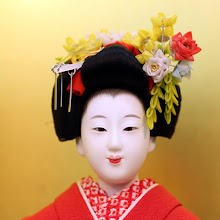During Ikebana silence is a must because the creation of the arrangement is meant to be a time to appreciate things in nature that people most often overlook. The process allows one to feel close to nature and to appreciate and find beauty in all art forms. It also inspires patience and tolerance of differences, not only in nature but in life as well.
When Ikebana first began the arrangements were quite simple consisting on only evergreen branches and flowers. This form of flowering arranging is called Kuge. By the end of the 15th century Ikebana was an art form and book were written with detailed instructions. The oldest is Sedensho which covers the years from 1443 – 1536.
During the Momoyama Period (1560-1600) ikebana evolved into a style known as Rikka. This style consisted of standing flowers that were meant to be a Buddhist expression of the beauty of nature. This style including seven branches which were arranged in a specific way in order to represent hills, valleys, waterfalls and other aspects of nature.
As the tea ceremony evolved so did another form of Ikebana, Chabana. This style was much simpler and did not have the rigged rules and instructions of other forms of Ikebana. It was simply meant to be an elegant but simple flower arrangement to be displayed during the tea ceremony.
There are three other styles of flower arranging and they are known as Nageire, Seika or Shoka, and Jiyuka. Nageire is consists of a very tight bundle of stems in a triangular three-branched arrangement. This style is considered very classic and it is also very easy to learn.
The Seika or Shoka style consists of three branches, with each having its own meaning. They are ten (heaven), chi (earth) and jin (man). This style is meant to show off the beauty and uniqueness of the plant in a very simple way.
The final style Jiyuka is a very open and creative style. It can include anything and everything, even things that are not plants. This style allows the flower arranger to be very creative and show off the beauty of nature as well as their own particular art form.

Thank you for explaining the many different kinds of ikebana! It helped me understand it better.
ReplyDeleteVery great post. I simply stumbled upon your blog and wanted to say that I have really enjoyed browsing your weblog posts. After all I’ll be subscribing on your feed and I am hoping you write again very soon!
ReplyDelete